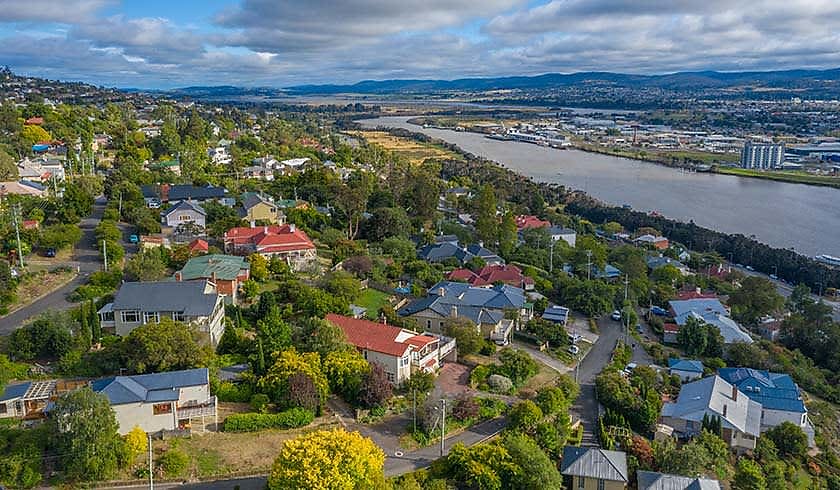Million-dollar markets whittled down by rising rates: CoreLogic
Australia’s property million-dollar club has shrunk considerably in the last six months, as the weight of rising inflation, consecutive rate hikes and falling property values led to dozens of markets losing their seven-figure price tags.

The latest report from CoreLogic shows that a total of 169 markets saw their median value fall below $1 million in the six months to April.
Meanwhile, only seven suburbs across capital cities and regional areas have increased in value to join the upper tier of the market during the same period.
Perth’s Burns Beach and Alfred Cove, as well as Adelaide’s Forestville and North Brighton, were the four capital city markets to see a rise in median value to above $1 million since April.
The regional NSW coastal areas Emerald Beach and Bonny Hills, along Bright in Victoria’s High Country, were also new entrants to the million-dollar club.
Upon the analysis of 3,649 suburbs across capital markets, the report showed that there are now a total of 836 areas with a median value of $1 million or more.
Data showed Sydney and Melbourne were home to the most million-dollar markets, with 347 and 117, respectively.
This was followed by Adelaide with 64, Brisbane with 57, the ACT with 54, Perth with 45, and Hobart with five. Darwin was the only capital city without representatives in the prime real estate club.
Million-dollar club forecast to continue losing members
CoreLogic research director Tim Lawless said the significant shrinking of the pool of million-dollar markets is due to a high proportion of more affordable outer ring suburbs in Sydney and Melbourne no longer clocking in at a median value of $1 million or more.
“We are seeing the more affordable housing markets recording smaller declines, but values are generally trending lower, just not as fast as more expensive areas,” he said.
He noted that the majority of the outer-fringe suburbs in the two biggest cities — which were previously reporting median values that were marginally over the $1 million threshold — have declined below the seven-figure mark.
“In many cases, a small percentage drop in value has been enough to push values below $1 million,” the expert explained.
Mr Lawless highlighted that while housing values in the most expensive quarter of the market are declining at a faster rate due to rising rates taking a heavier toll on bigger mortgages, the majority of the suburbs would need to see values contract significantly further before their median values fall below the million-dollar mark.
For buyers and sellers, the report highlighted that a decline in the number of seven-figure suburbs simply reflects the weaker housing market conditions.
In Sydney and Melbourne, values have pulled back the strongest across the country by 8.6 per cent and 5.6 per cent in the 12 months to October 2022.
On that note, Mr Lawless pointed out that the NSW and Victorian capitals are the only cities to see a reduction in the number of million-dollar suburbs compared to October 2021.
“Hobart was the only other capital to record an annual decline in dwelling values so far (down 1 per cent); however, we are yet to see this result in fewer million-plus suburbs relative to a year ago,” he said.
And while Adelaide had only seen median values fall -0.6 per cent since the market peaked in July, Mr Lawless noted that the rate of decline had accelerated —indicating that more markets could be kicked out of the city’s million-dollar club.
“Adelaide’s rate of decline has become more pronounced across the upper quartile, where values are down 2.6 per cent since peaking a month earlier in June.
“With this weaker trend across the more expensive end of the market, it’s likely we will see some ‘borderline’ million-plus suburbs starting to slip below the million-dollar mark over coming months,” he stated.
Despite the decline in value, Mr Lawless said that the number of suburbs with median values of $1 million or more is still more than twice compared to the 393 million-dollar markets recorded in March 2020.
“The same trend is true across each of the capitals and rest of state areas, including the cities where housing values have fallen the most, like Sydney where there were 257 $1 million-plus suburbs and in Melbourne where there were 85 $1 million-plus suburbs in March 2020,” Mr Lawless said.
But the expert cautioned that as the downturn continues to unfold, the market weakness is expected to continue.
With a record seventh rate rise in the cards for the Reserve Bank in December, Mr Lawless said that it is “more than likely the million-dollar club will continue to shrink”.
“It is likely values will continue to trend lower across each of the broad valuation cohorts of the market, but while the upper quartile of the housing market has led the downturn, it’s also the sector of the market that is leading the easing in the pace of declines.
“The trend over the past few months has been towards an easing in the rate of decline, especially in Sydney and Melbourne, so if that trend persists, we may not see an acceleration in the number of suburbs where the median value drops below $1 million dollars,” he stated.
